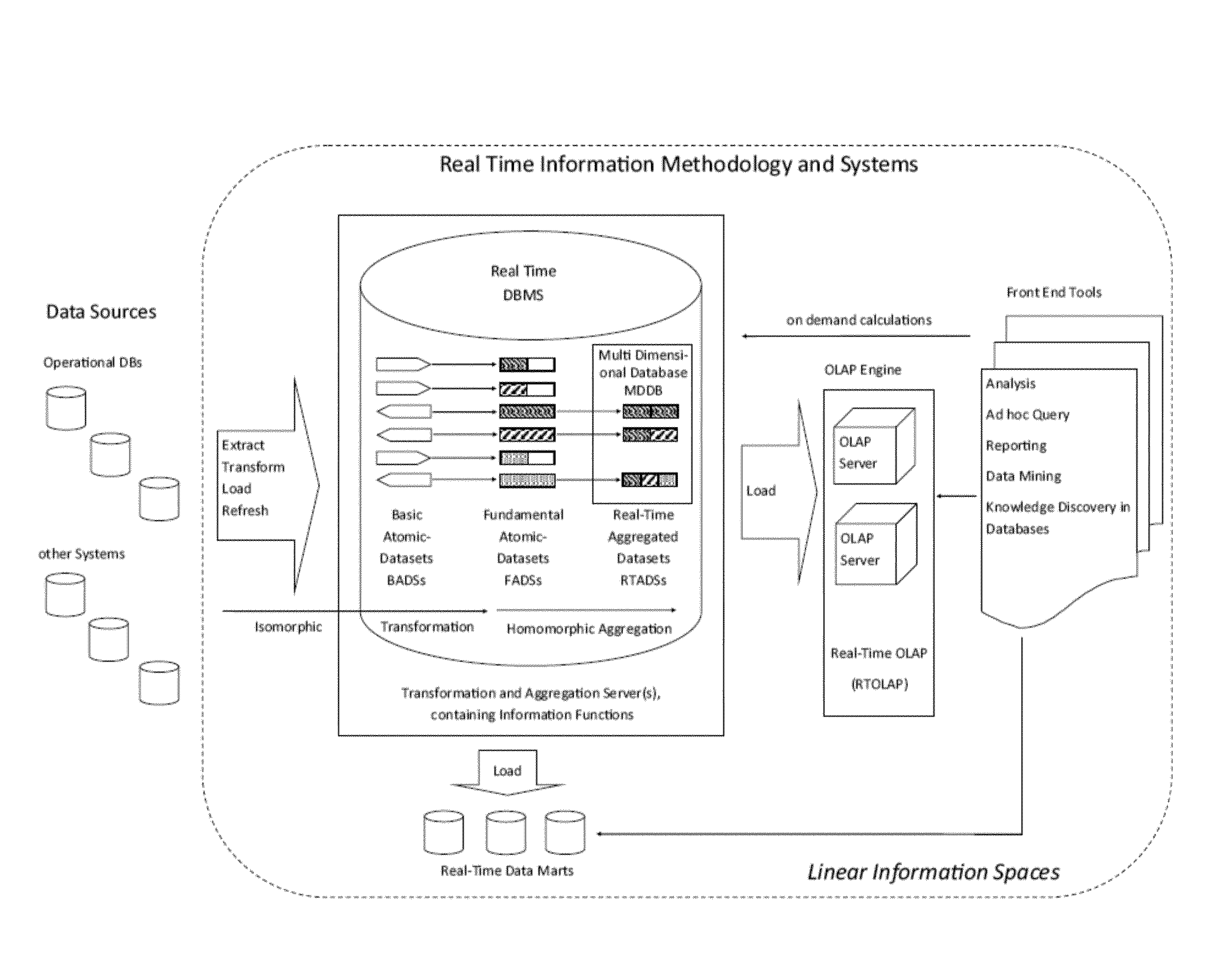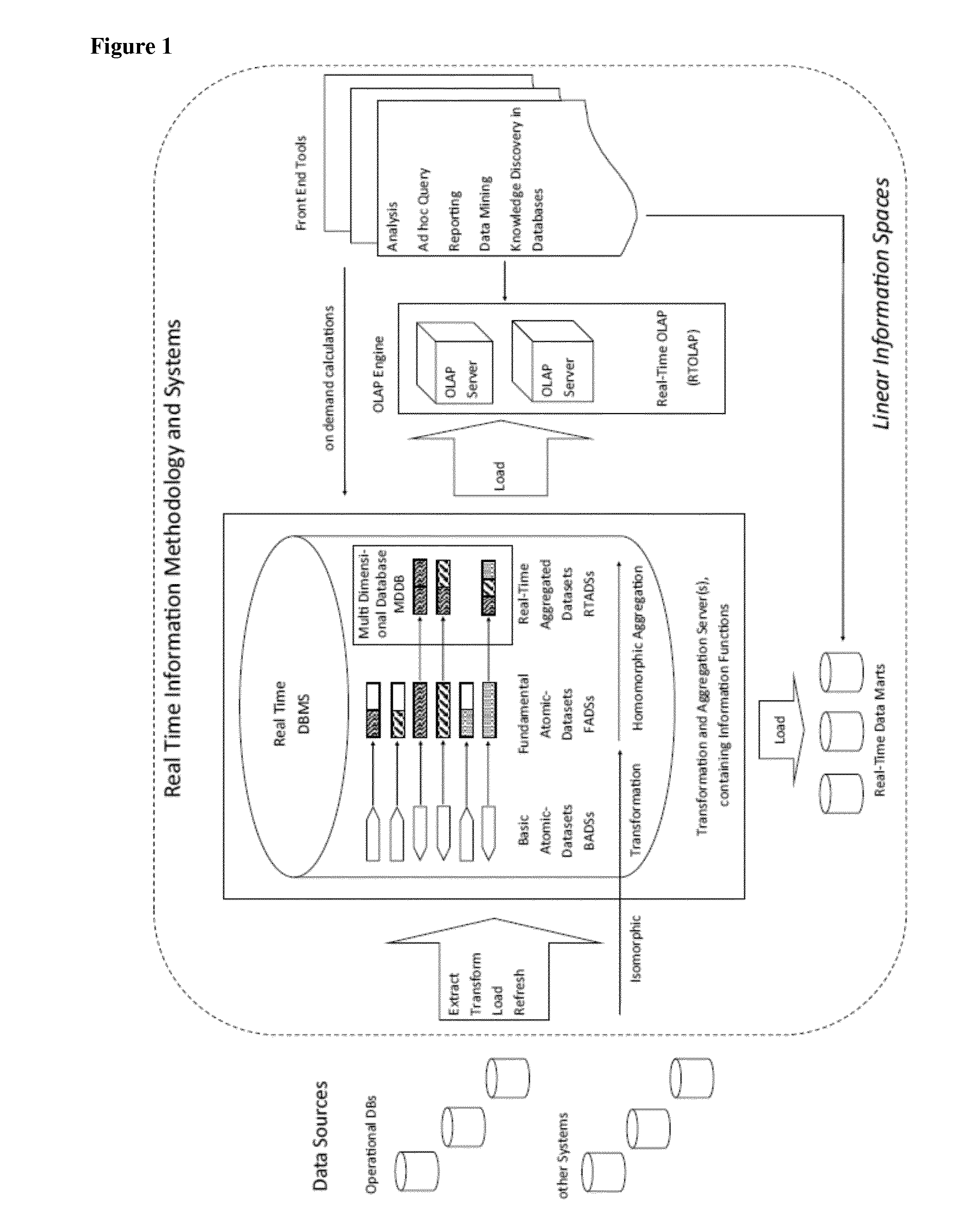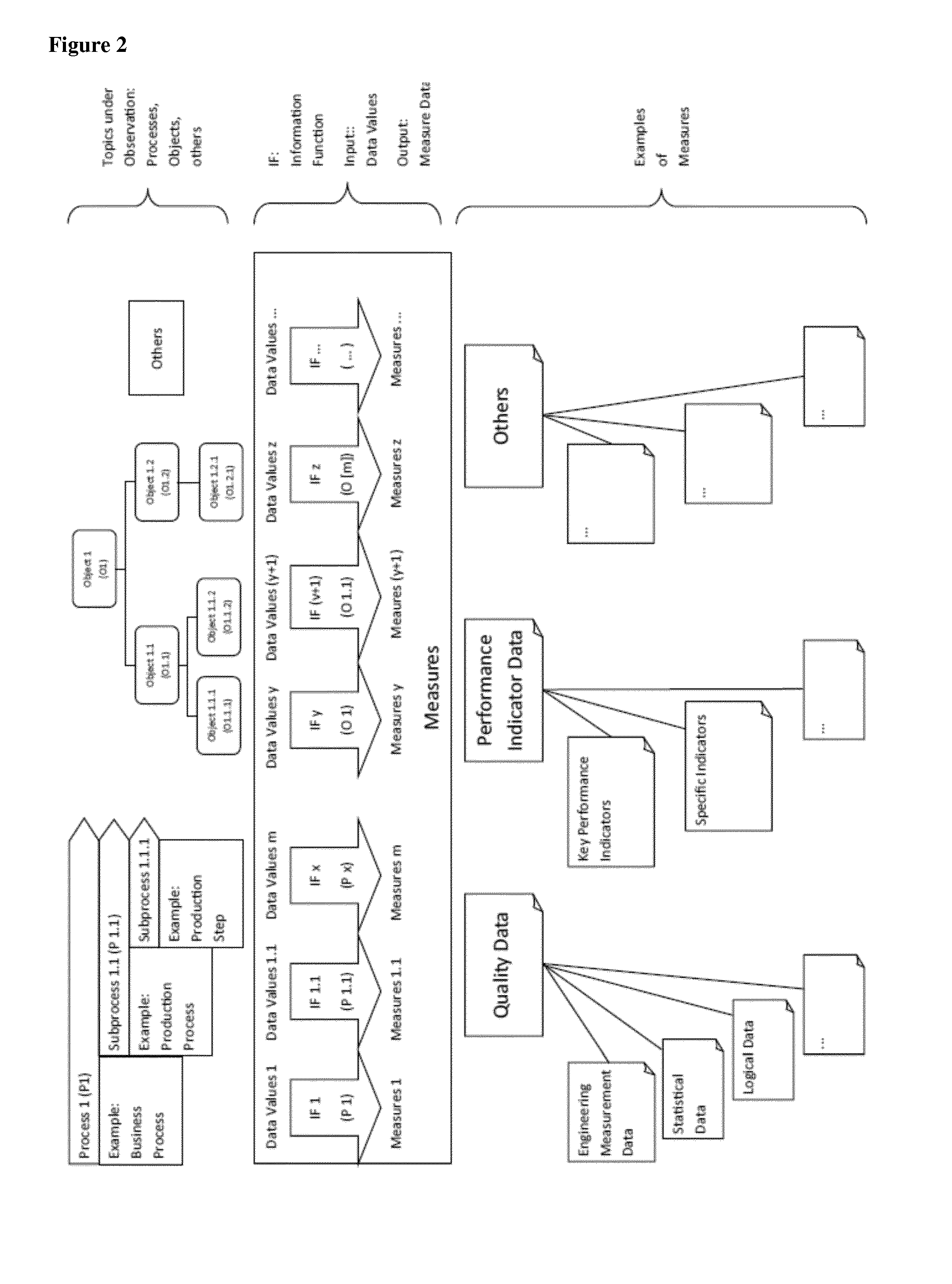Real-time information systems and methodology based on continuous homomorphic processing in linear information spaces
a linear information space and information system technology, applied in the field of information system technology, can solve the problems of limited performance and flexibility, inefficient algorithms, and inability to implement more overall, and achieve the effects of improving system performance, reducing access and/or search time and/or aggregation time, and improving real-time information retrieval
- Summary
- Abstract
- Description
- Claims
- Application Information
AI Technical Summary
Benefits of technology
Problems solved by technology
Method used
Image
Examples
example 1
Calculation of Information Functions as Generic Measures
[0485]Within the spirit of the present invention, any data of interest, which has to be captured, will be treated as a measurement, as measures, or as figures. Such figures may be given as performance indicators, engineering measurements, financial indicators, or any other data of interest. In a most abstract sense, a measure may not be a priori dedicated to specific contents of meaning. On this level, measures may be defined as organized assemblies or groupings of types of data (such as numerical data types, logical data types, data types incorporating specific internal structures (arrays, records etc.), pictures, sound representations, unstructured texts, and others). The aim of this approach is to enable and to support proper processing of any such kind of data, even if no informational content is given. Informational content may be dedicated to any such data within a separate step (i.e. a posteriori). Practical examples of ...
example 2
Calculation of Information Functions in the Semiconductor Industry
[0486]Within the present examples, an arbitrary time period will be considered for aggregation. The time period can be a working shift, a day, a week, a month, etc., but it is not restricted to the enumeration above.
[0487]The finest granularity of the basic atomic datasets in the examples is (material) unit, (production) step, timestamp, transcode, equipment, product, unittype, unitdesc.
[0488]The (material) unit is the manufactured item, which is tracked by the manufacturing and execution system (MES). In the semiconductor industry the (material) unit can be a lot, a wafer, a chip, etc. In order to simplify the notations, the term unit will be used instead of the material unit. In all other cases, the unit type will be explicitly mentioned (e.g. time unit, etc.).
[0489]The (production) step is the finest abstraction of the processing level, which is tracked by the reporting system. In order to simplify the notation, th...
example 3
Statistical Methods
[0566]More generally, statistical methods are typically applied to finite sets of elements. This holds especially true for corresponding algorithmic definitions and implementations within the context of Data Warehousing, or even any computer related implementation of statistical methods. In particular, the most common statistical methods are induced by linear or linearizable functions. From the viewpoint of currently used typical definitions and practices regarding statistical methods, it may look sometimes uncommon to define and to use the continuous aggregation and / or computation techniques as disclosed in the present invention. But given the finiteness of sets within the context of any finite computing environment, it becomes clear that any statistical method may be defined in the scope of linear models (including all advantages of the linear model, as already mentioned supra). In the following, 3 examples within this context: MEDIAN, MAX / MIN, AVERAGE, and ABSO...
PUM
 Login to View More
Login to View More Abstract
Description
Claims
Application Information
 Login to View More
Login to View More - R&D
- Intellectual Property
- Life Sciences
- Materials
- Tech Scout
- Unparalleled Data Quality
- Higher Quality Content
- 60% Fewer Hallucinations
Browse by: Latest US Patents, China's latest patents, Technical Efficacy Thesaurus, Application Domain, Technology Topic, Popular Technical Reports.
© 2025 PatSnap. All rights reserved.Legal|Privacy policy|Modern Slavery Act Transparency Statement|Sitemap|About US| Contact US: help@patsnap.com



